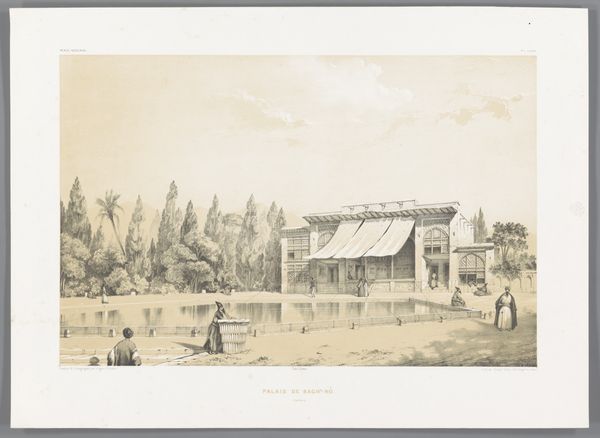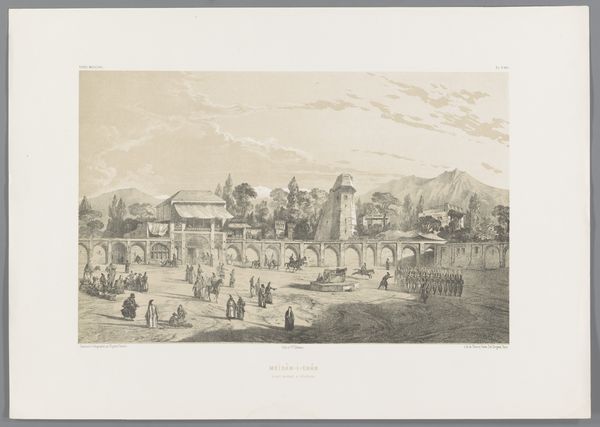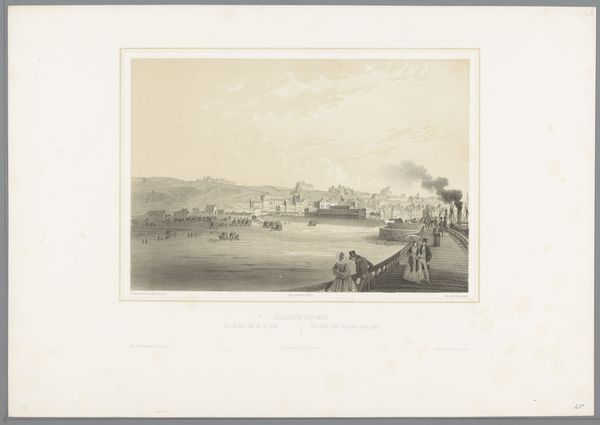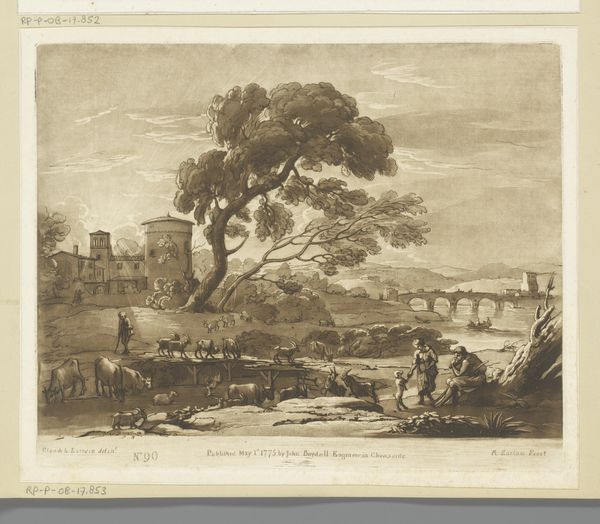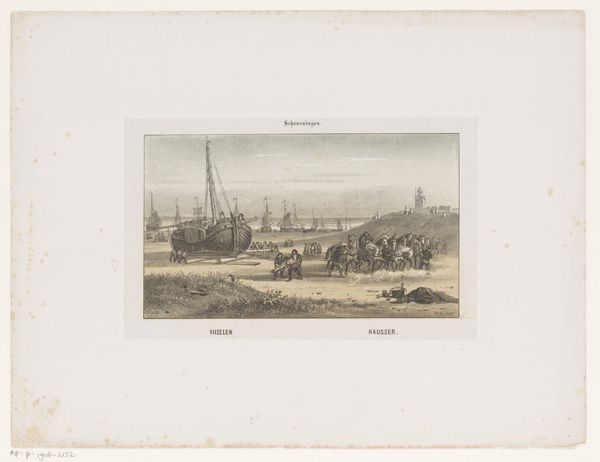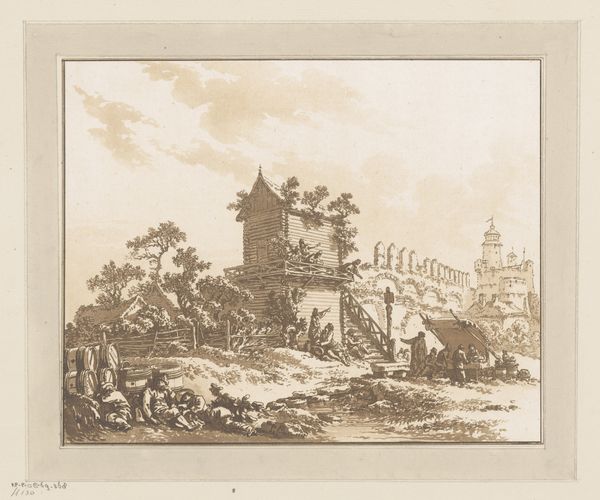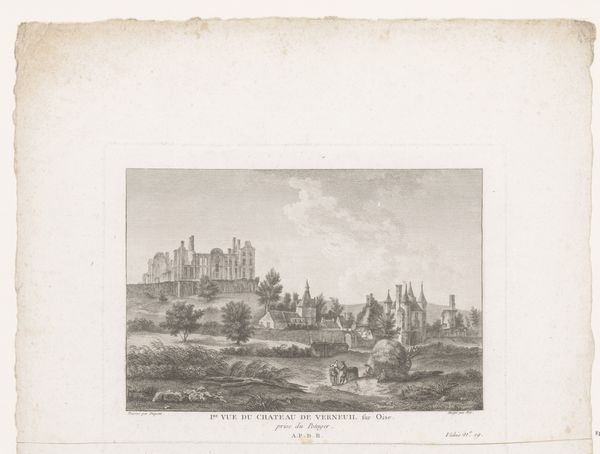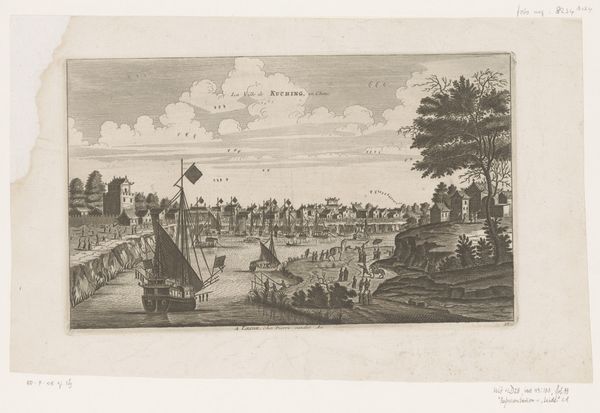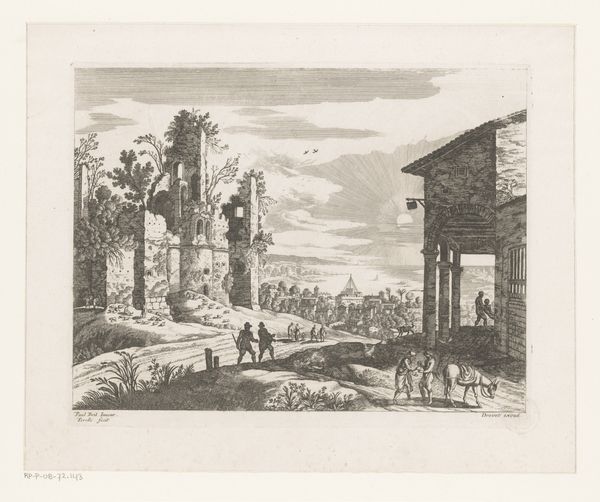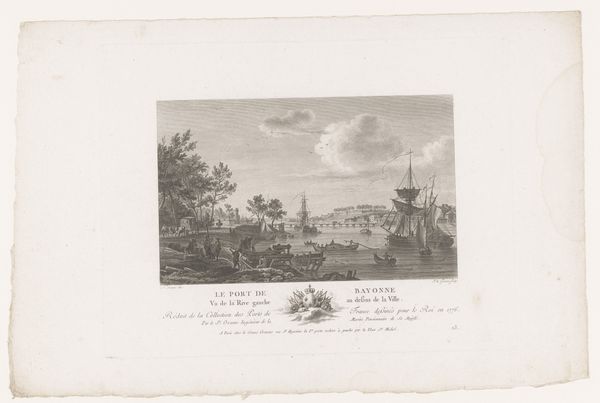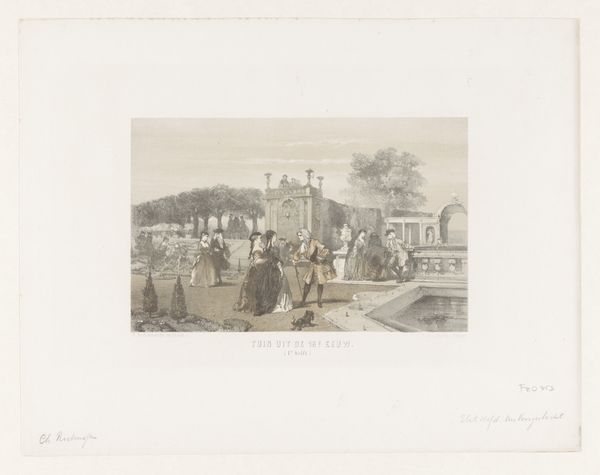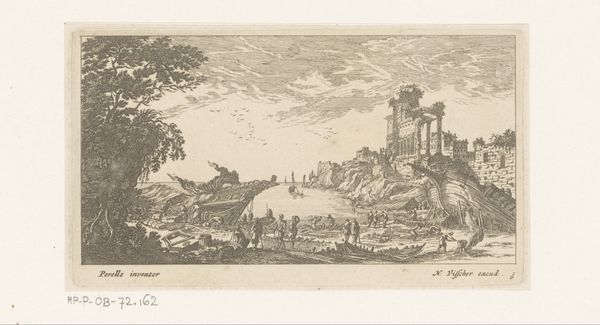
drawing, print, pen, engraving
#
architectural sketch
#
landscape illustration sketch
#
drawing
#
aged paper
#
light pencil work
#
pale palette
# print
#
pencil sketch
#
incomplete sketchy
#
landscape
#
personal sketchbook
#
orientalism
#
pen
#
cityscape
#
islamic-art
#
watercolour illustration
#
storyboard and sketchbook work
#
engraving
Dimensions: height 392 mm, width 530 mm
Copyright: Rijks Museum: Open Domain
Curator: Eugène Flandin created this engraving, entitled "Gezicht op een gebouw in Isfahan, Iran", sometime between 1843 and 1854. It now resides in the Rijksmuseum's collection. What's your immediate take? Editor: Dust. That's the first thing that hits me. A kind of faded glory, seen through a heat haze. The paper itself looks aged. Curator: Indeed. Flandin’s orientalist pieces like this often carried that visual weight. Think about it: the pencil and pen lines, the pale palette—they evoke a feeling of distance, both geographical and temporal. There’s a cultural memory embedded. Editor: Yes! It feels less like a depiction and more like a faded postcard from a dream. The figures are so subtly rendered, almost blending with the architecture. Are those storyboards or sketchbook studies? Curator: Elements of both, I think. The architectural details, particularly of the building under focus, suggest careful observation, perhaps even a desire to document. But the sketchy, incomplete nature speaks to the spontaneous feel of sketchbook work. This work fits into that "storyboard and sketchbook work" context seamlessly. Consider it through the psychological lens, it can serve as the artist’s personal mnemonic device. Editor: That’s so evocative. It feels incredibly intimate, like stumbling upon someone's private thoughts on paper. You know, the interplay of light and shadow gives a real sense of depth despite the overall paleness of the artwork. It gives a good glimpse into Persian architecture. The pale colour seems right too. I have been there. Curator: Yes, the interplay accentuates architectural and natural forms—emphasising their iconic nature within the larger cityscape theme. Consider the figures situated in the foreground, are those people enjoying a serene moment in nature, engaging in private conversation, or patiently waiting to enter one of the religious institutions in that city? Editor: It captures this specific time period; so different now with its unique landscape, mood, architectural structure and all the aged details captured to remind people for hundreds of years to come, like a preserved history. Curator: A visual document, a cultural artifact—and an intriguing peek into a city we view through the eyes of a nineteenth-century artist. Editor: Indeed. I now think of the tales this simple sketch can spin! It almost compels you to embark on a magical carpet and witness the splendour for yourself!
Comments
No comments
Be the first to comment and join the conversation on the ultimate creative platform.
